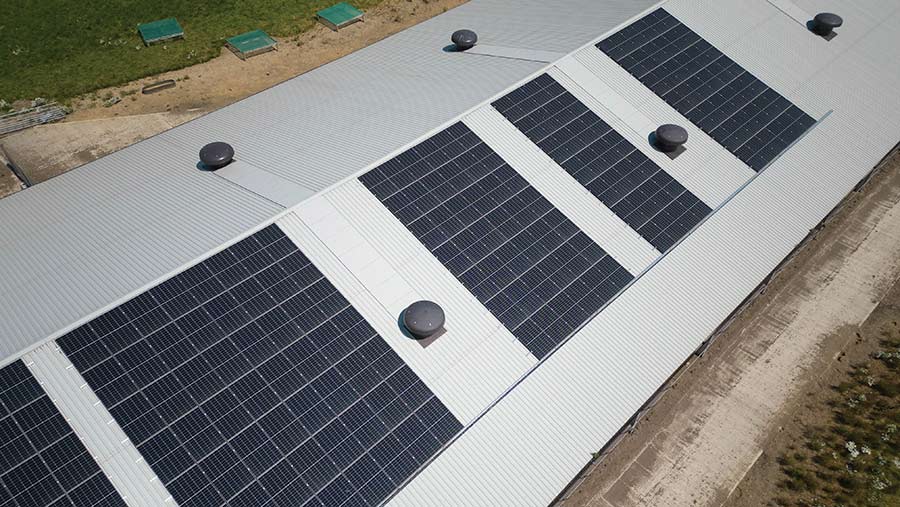Experts outline on-farm renewable energy options
 © Tim Scrivener
© Tim Scrivener Renewable energy has become a popular on-farm solution for cutting emissions and reducing bills from mainstream suppliers. So what are the options for renewable energy use on farm?
In the most recent Farmers Weekly webinar, experts explored the opportunities available.
See also: How dairy’s solar fence captures energy at peak demand
You can watch the video here and read the main points below.
Solar
Putting solar panels on buildings such as sheds is something most farmers will have considered – but planning can create challenges.
Larry Irwin, renewables team senior associate director at Strutt & Parker, explained what planners consider when they receive an application.
“We would look at the General Permitted Development Order; the triggers for planning include the roof type, general projection over the roof edge, and the type of building it’s being put on.
“In terms of capacity, the limit for a non-commercial scale, which wouldn’t require planning, is one megawatt (1MW). But if you’re unsure, speak to the local authority,” he said.
John Wadeson, renewable project specialist at AF Group, was asked whether it was worth installing battery storage at the same time.
“If there’s no usage on site and it’s being entirely exported back to the grid, then battery storage could be used to change the discharge timing to get better benefits and payments,” John suggested.
Battery longevity must also be considered. “The bigger sites should be operational for 20 to 30 years – most warranties for the batteries are 10 years,” said Tim Foster, head of energy services at Conrad Energy.
“For smaller schemes, warranties are typically five to seven years – but check the small print, ask about the warranty agreement and consider the financial strength of the supplier – make sure there will be backup for the length of the warranty.”
In terms of financing, banks will generally lend within the length of the warranty period.
“For a 10-year battery we would look at a seven-year term, for a seven-year battery we would be looking at a five-year term,” said Richard Pretty, head of complex transactions at Lloyds Bank Asset Finance.
Anaerobic digestion
Anaerobic digestion (AD) has been a popular option for large-scale farms in the UK – but could it be done on a smaller scale, the panel was asked.
“It depends if there is enough feedstock for the AD unit, and what is done with the gas that comes out of it. The simplest would be to get the gas back into the grid and then look at electricity generation,” said Tim.
“All farms are coming under pressure to decarbonise and show an environmental improvement. With the smaller AD systems, there is an argument for selling to the corporates looking for green gas,” he added.
And having the right person operating the plant is important. “It’s about how professional they are, and if they know what they’re doing. It’s costly if things go wrong,” warned Richard.
Wind
Currently, it is challenging to get an onshore wind project consented, according to Tim.
“It is difficult to find a site with the resources, grid connection, and somewhere that won’t have local and national rejections to development,” he said.
Future
There are huge opportunities for power generation on farm.
Tim said: “The existing coal power stations are being demolished, the UK is decarbonising, and we’re still short of power. So there are lots of opportunities for power generation and how we make best use of it.”
